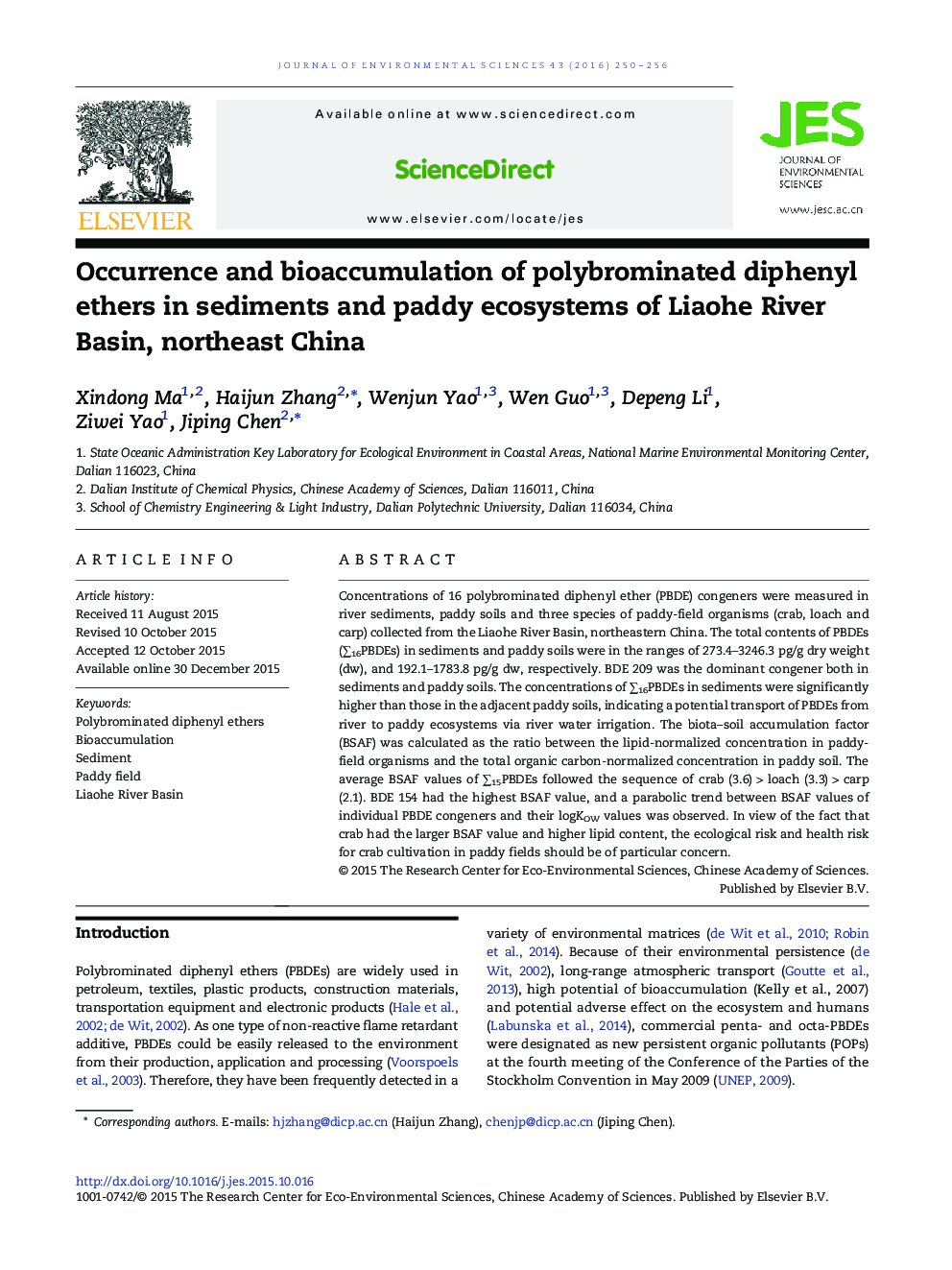| کد مقاله | کد نشریه | سال انتشار | مقاله انگلیسی | نسخه تمام متن |
|---|---|---|---|---|
| 4453678 | 1620810 | 2016 | 7 صفحه PDF | دانلود رایگان |
Concentrations of 16 polybrominated diphenyl ether (PBDE) congeners were measured in river sediments, paddy soils and three species of paddy-field organisms (crab, loach and carp) collected from the Liaohe River Basin, northeastern China. The total contents of PBDEs (∑16PBDEs) in sediments and paddy soils were in the ranges of 273.4–3246.3 pg/g dry weight (dw), and 192.1–1783.8 pg/g dw, respectively. BDE 209 was the dominant congener both in sediments and paddy soils. The concentrations of ∑16PBDEs in sediments were significantly higher than those in the adjacent paddy soils, indicating a potential transport of PBDEs from river to paddy ecosystems via river water irrigation. The biota–soil accumulation factor (BSAF) was calculated as the ratio between the lipid-normalized concentration in paddy-field organisms and the total organic carbon-normalized concentration in paddy soil. The average BSAF values of ∑15PBDEs followed the sequence of crab (3.6) > loach (3.3) > carp (2.1). BDE 154 had the highest BSAF value, and a parabolic trend between BSAF values of individual PBDE congeners and their logKOW values was observed. In view of the fact that crab had the larger BSAF value and higher lipid content, the ecological risk and health risk for crab cultivation in paddy fields should be of particular concern.
Figure optionsDownload as PowerPoint slide
Journal: Journal of Environmental Sciences - Volume 43, May 2016, Pages 250–256
